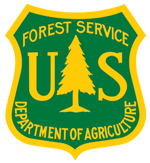NRCS Conservation Practices and Materials
Copper Creek In-Stream Habitat Restoration Project
This project improved riparian zones, water quality, appropriate sediment flows and restoring physical habitat for multiple listed aquatic species in the Copper Creek watershed, within the Upper Tennessee River Basin. (Photo: The low water bridge that was removed and replaced with a new bridge that spans the river. )
Copper Creek In-Stream Habitat Restoration Project
This project improved riparian zones, water quality, appropriate sediment flows and restoring physical habitat for multiple listed aquatic species in the Copper Creek watershed, within the Upper Tennessee River Basin.
Agenda for Roundtable Discussion on Future of Federal Collaboration in Landscape-Scale Planning
Here is the full agenda to the meeting that is initializing a conversation about the future of federal agency collaboration in landscape-scale planning.
National Fish, Wildlife, & Plants Climate Adaptation Strategy
The purpose of the National Fish, Wildlife and Plants Climate Adaptation Strategy is to inspire and enable natural resource administrators, elected officials, and other decision makers to take action to adapt to a changing climate. Adaptation actions are vital to sustaining the nation’s ecosystems and natural resources — as well as the human uses and values that the natural world provides.
Appalachian LCC Reachback to Field Offices
A PowerPoint summary of the mission, governance structure, decision-support tools, and conservation priorities of the Appalachian LCC.
Ken Elowe Conservation Framework Presentation AppLCC Workshop Nov 2011
Ken Elowe Conservation Framework Presentation AppLCC Workshop Nov 2011
National Geospatial Management Center
The National Geospatial Management Center (NGMC) has long been respected for the quality of maps it produces to support various Natural Resource Conservation Service projects and programs. In addition to producing maps, NGMC is a major distributor of geospatial data to support National, State and local field needs.
National Geospatial Management Center
The National Geospatial Management Center (NGMC) has long been respected for the quality of maps it produces to support various Natural Resource Conservation Service projects and programs. In addition to producing maps, NGMC is a major distributor of geospatial data to support National, State and local field needs.
Thematic‐Area (1) Pre‐Existing Tools, Portals, Datasets, Resources
Thematic‐Area (1) Pre‐Existing Tools, Portals, Datasets, Resources
Rick Durbrow PPT Presentation pdf
Rick Durbrow Integrated Federal Resources for Ecosystem Protection


























